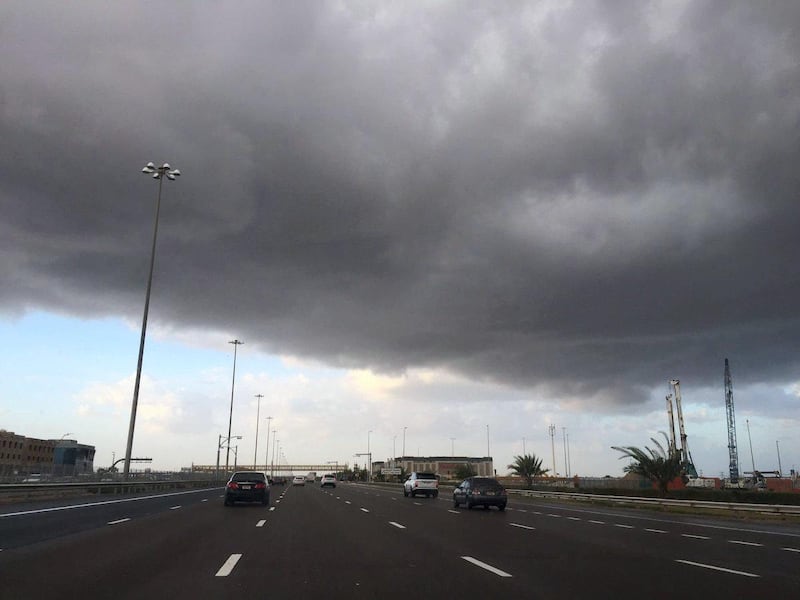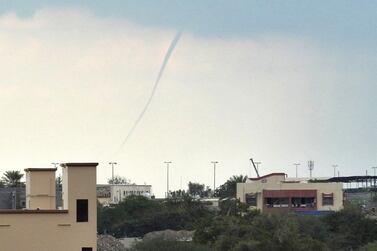The UAE woke to another day of heavy rain as the country’s weather bureau issued a warning for residents on the coast to prepare for bad conditions.
The alert, which will be in force until 10am on Wednesday, covered a large area stretching from the outskirts of Abu Dhabi city right up to the northern tip of the country and down to the eastern border with Oman around Al Ain.
The downpours could be accompanied by gusty winds, which will kick up sand and dust over exposed areas, the National Centre of Meteorology said.
#Alert #NCM pic.twitter.com/ov9tT7B5qH
— المركز الوطني للأرصاد (@NCMS_media) January 15, 2020
Areas including Abu Dhabi city and Dubai experienced heavy rain accompanied by thunder and lightning overnight.
By sunrise, only scattered showers and gloomy skies remained, but the rain left parts of Dubai that were affected by flooding earlier in the week waterlogged again.
أمطار دبي #المركز_الوطني_للأرصاد #أمطار_الخير #استمطار #تلقيح_السحب #هواة_الطقس #أصدقاء_المركز_الوطني_للأرصاد #عبيد_الشامسي pic.twitter.com/HYPG8uNDGJ
— المركز الوطني للأرصاد (@NCMS_media) January 14, 2020
Further downpours could fall on Wednesday morning over the islands and on the coast.
The rain clouds will eventually move away to leave partly sunny skies.
Temperatures will be chilly for the UAE, reaching a high of 20°C on the coast and up to 21°C inland.
The sea will be rough, becoming moderate by evening in the Arabian Gulf and in the Sea of Oman, NCM said.
أمطار دبي #المركز_الوطني_للأرصاد #أمطار_الخير #استمطار #تلقيح_السحب #هواة_الطقس #أصدقاء_المركز_الوطني_للأرصاد #عبيد_الشامسي pic.twitter.com/VyotHxLK9N
— المركز الوطني للأرصاد (@NCMS_media) January 14, 2020
The weather bureau had warned about heavy showers on Tuesday and Wednesday because of a front that swept in off the Arabian Sea from Kuwait.
The showers followed a three-day deluge over the weekend, when about a year’s worth of rain fell on some parts of the country, forcing a number of schools to shut on Sunday in Dubai and Abu Dhabi due to damage.
In Dubai, figures suggest that at the peak of the downpours, 150mm of rain fell each hour, for two-and-a-half hours. During a typical January in the Emirates, about 10mm of rain falls on average.
Al Ain and Ras Al Khaimah were also heavily flooded.
NCM has carried out cloud-seeding missions in an effort to increase rainfall, but the showers were caused by strong weather systems that originated elsewhere in the Gulf.
They were not the result of cloud seeding, as was reported by some local news sites.







